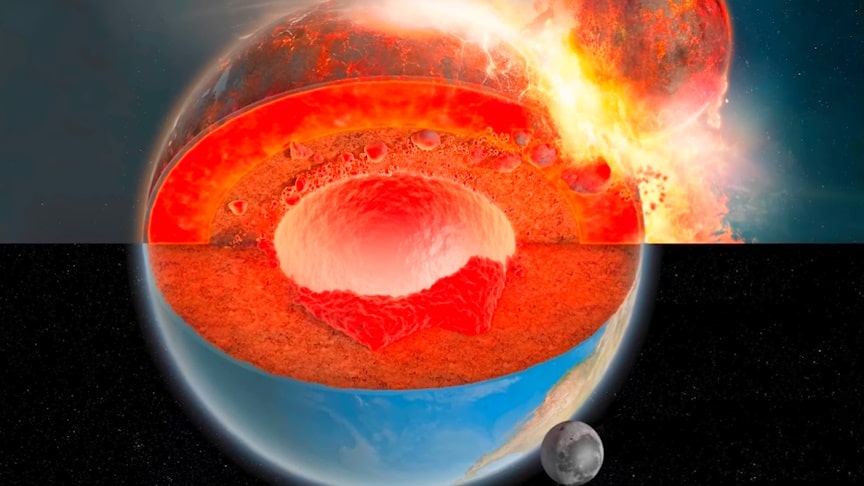Researchers have uncovered evidence suggesting that two massive blobs located deep near Earth’s core are the remains of an ancient planet possibly named Theia that collided with our world 4.5 billion years ago.Theia is a hypothesized ancient planet in the early Solar System that, according to the giant-impact hypothesis, collided with the early Earth around 4.5 billion years ago, with some of the resulting ejected debris gathering to form the Moon.
source.image: Global Update
Such a collision, with the two planets’ cores and mantles fusing, could explain why Earth’s core is larger than expected for a body its size. Collision simulations support the idea that the large low-shear-velocity provinces in the lower mantle may be remnants of Theia.Computer simulations suggest that Theia was traveling no faster than 4 km/s (14,000 km/h) when it struck Earth at an estimated 45-degree angle.
Initially, the hypothesis supposed that Theia had struck Earth with a glancing blow[8] and ejected many pieces of both the proto-Earth and Theia, those pieces either forming one body that became the Moon or forming two moons that eventually merged to form the Moon.
Advertisement
By 2012, theories found Theia could explain why Earth’s core is larger than expected for a body its size; Theia’s core and mantle could have fused with those of Earth.It is also possible that the large low-shear-velocity provinces detected deep in Earth’s mantle may be fragments of Theia. It is possible that Theia was captured by the Earth.











